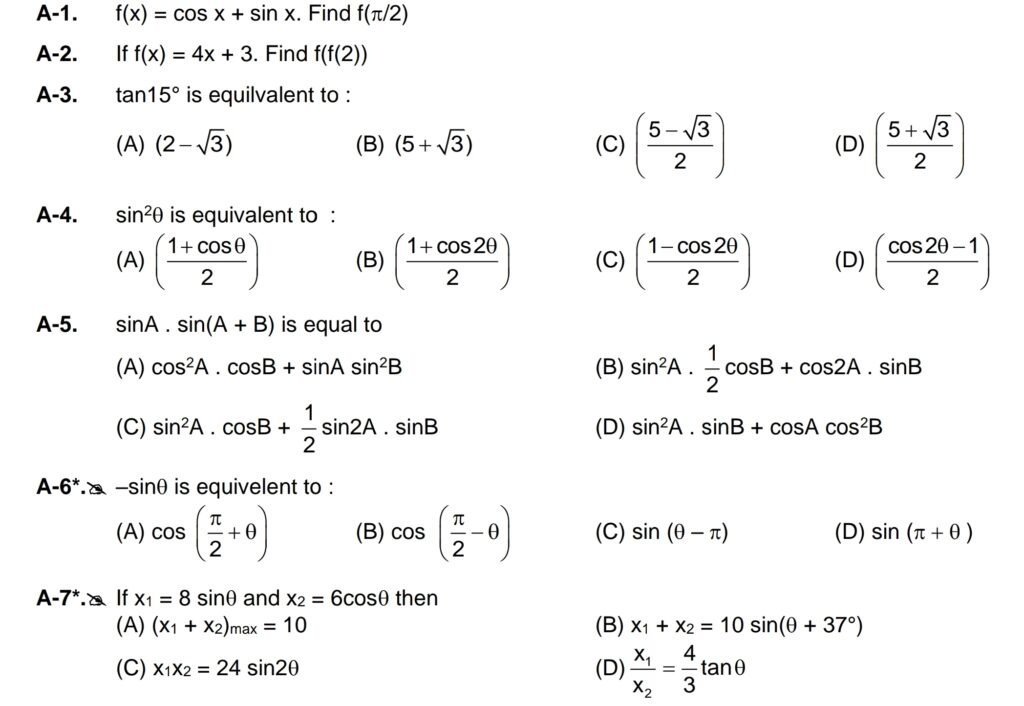- Right angle triangle and ratio of sides
- defining trignomatric functions and ratio of sides
- trignomatrics identities
- values of trignomatric function at different values of theta(angles)
- trignomatric formula and CAST rule.
Basic trigonometry is a branch of mathematics that deals with the relationships between the sides and angles of triangles. It’s fundamental for understanding various phenomena in mathematics, science, engineering, and more. Here are some key concepts:
- Trigonometric Functions: Trigonometric functions relate the angles of a right triangle to the lengths of its sides. The primary trigonometric functions are:
- Sine (sin): Opposite / Hypotenuse
- Cosine (cos): Adjacent / Hypotenuse
- Tangent (tan): Opposite / Adjacent
These functions are defined for acute angles of a right triangle.
- Right Triangle Relationships: In a right triangle, the three sides are called the hypotenuse, adjacent side, and opposite side. The Pythagorean theorem, which states that the square of the length of the hypotenuse (the side opposite the right angle) is equal to the sum of the squares of the lengths of the other two sides, is fundamental in trigonometry.
- Unit Circle: The unit circle is a circle with a radius of 1 unit centered at the origin of a coordinate system. It’s used to define trigonometric functions for all angles, not just acute angles. The coordinates of points on the unit circle correspond to the values of trigonometric functions.
- Trigonometric Identities: Trigonometric identities are equations involving trigonometric functions that are true for all values of the variables involved. Examples include:
- Pythagorean identities: ( sin²A + cos²A = 1 )
- Reciprocal identities: ( CosecA= 1÷SinA )
- Co-function identities
- Trigonometric Ratios and Applications: Trigonometric ratios are used to solve problems involving angles and distances in various contexts such as navigation, physics, engineering, and astronomy. For example, trigonometry is used to calculate distances to stars, heights of buildings, and lengths of sides in triangles.
Understanding basic trigonometry lays the foundation for more advanced topics such as trigonometric equations, identities, and functions. It’s a powerful tool for solving a wide range of mathematical and real-world problems involving angles and triangles.
Basic Trigonometry by KAPIL RAJAK Basic trignomatery 2 by KAPIL RAJAKBasic Trigonometry
Exercise

Answer

